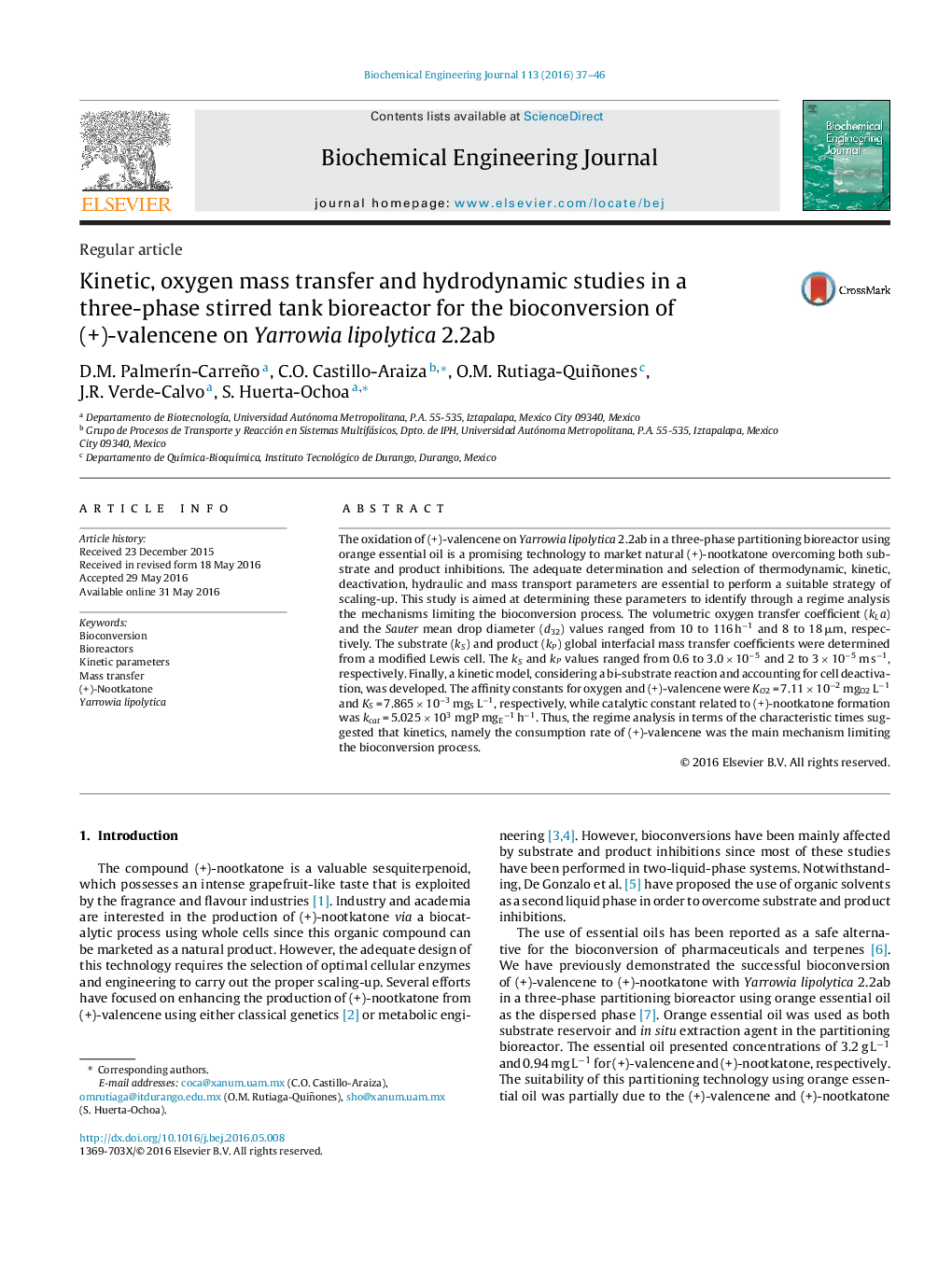| کد مقاله | کد نشریه | سال انتشار | مقاله انگلیسی | نسخه تمام متن |
|---|---|---|---|---|
| 2738 | 129 | 2016 | 10 صفحه PDF | دانلود رایگان |

• We studied valencene bioconversion using orange essential oil as dispersed phase.
• Kinetic, deactivation, hydraulic and mass transport phenomena were evaluated.
• A kinetic model, including cell deactivation, was developed.
• A regime analysis showed that kinetics limited the bioconversion process.
The oxidation of (+)-valencene on Yarrowia lipolytica 2.2ab in a three-phase partitioning bioreactor using orange essential oil is a promising technology to market natural (+)-nootkatone overcoming both substrate and product inhibitions. The adequate determination and selection of thermodynamic, kinetic, deactivation, hydraulic and mass transport parameters are essential to perform a suitable strategy of scaling-up. This study is aimed at determining these parameters to identify through a regime analysis the mechanisms limiting the bioconversion process. The volumetric oxygen transfer coefficient (kLa) and the Sauter mean drop diameter (d32) values ranged from 10 to 116 h−1 and 8 to 18 μm, respectively. The substrate (kS) and product (kP) global interfacial mass transfer coefficients were determined from a modified Lewis cell. The kS and kP values ranged from 0.6 to 3.0 × 10−5 and 2 to 3 × 10−5 m s−1, respectively. Finally, a kinetic model, considering a bi-substrate reaction and accounting for cell deactivation, was developed. The affinity constants for oxygen and (+)-valencene were KO2 = 7.11 × 10−2 mgO2 L−1 and KS = 7.865 × 10−3 mgS L−1, respectively, while catalytic constant related to (+)-nootkatone formation was kcat = 5.025 × 103 mgP mgE−1 h−1. Thus, the regime analysis in terms of the characteristic times suggested that kinetics, namely the consumption rate of (+)-valencene was the main mechanism limiting the bioconversion process.
Journal: Biochemical Engineering Journal - Volume 113, 15 September 2016, Pages 37–46